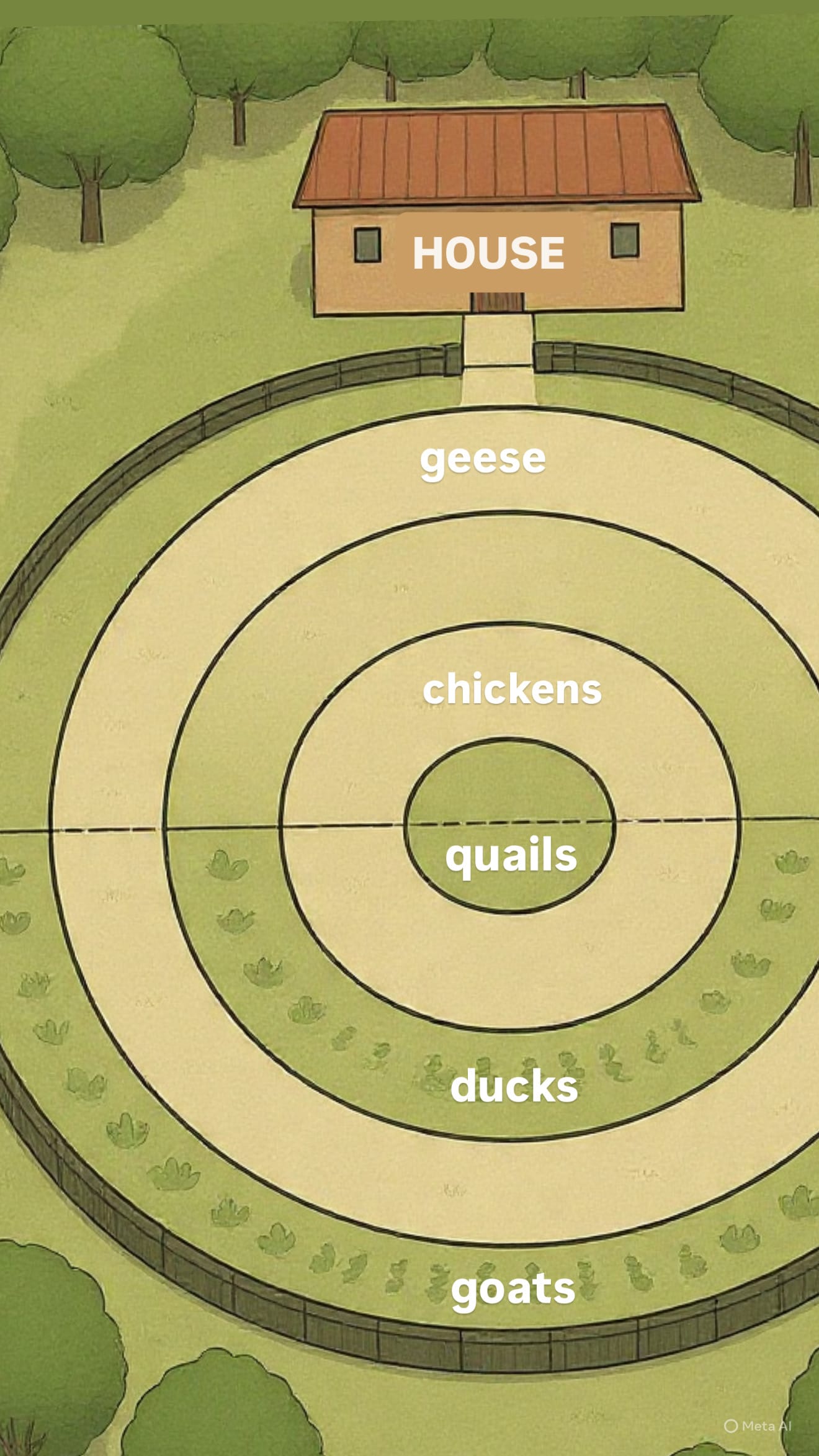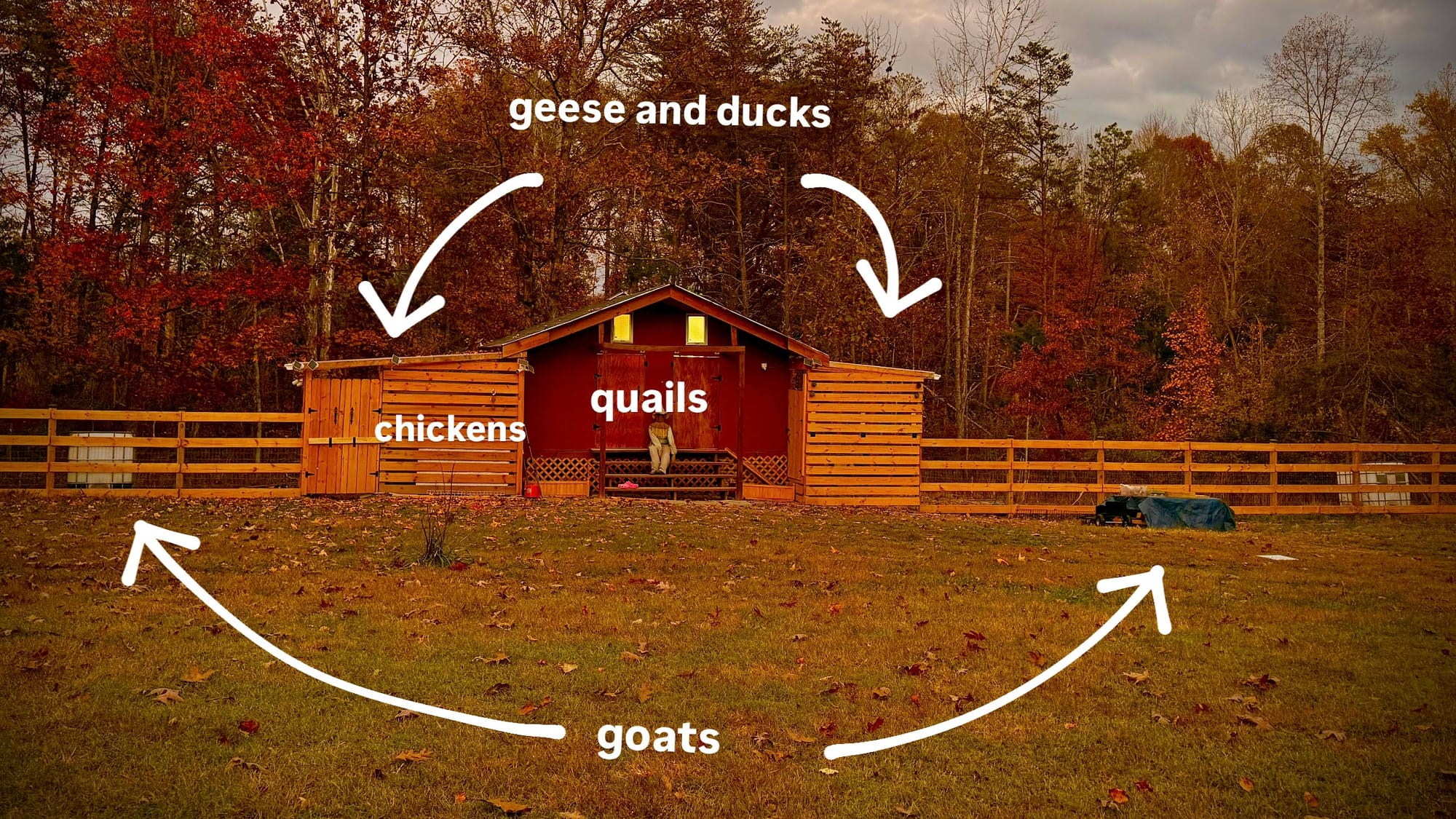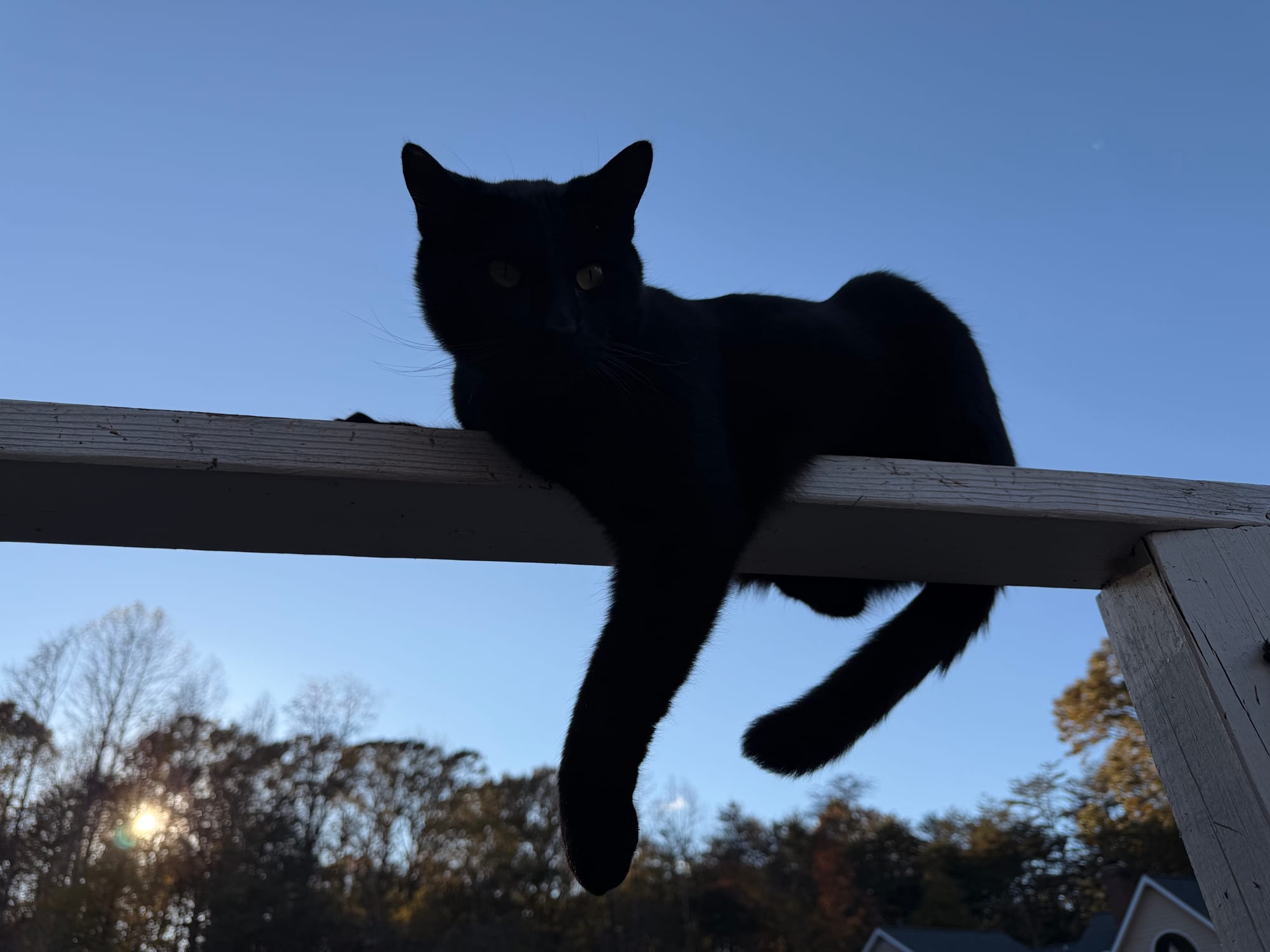Case study of five layers of defense | tested by the red team
In medieval times, farms were built like modern enterprise security systems: big, loud, more alert animals with better vision on the outer circle guarded the smaller, more vulnerable assets in the middle. I kept the same logic and will try to explain it with an information security flair:

The biggest fence outside (or virtual fence) is the apex predator territory - humans territory. It’s where we walk, and our scent is around that outer fence. All animals know that inside is our land.
Next circle is goats: goats have perfect night vision - panoramic and focused on distance - so they would be able to climb mountains or rocky terrain at night if they were in the wilderness.
Next circle are geese - they also have perfect night vision. They don’t care about cold or windy weather, so they will be alert and loud if predators attack, even on a bad stormy night.
Next circle is where ducks are. Ducks also have good night vision; it allows them and geese to migrate at night while the sun is not as hot and the air flow is more stable. Duck hens (females) are very loud and can sound the alarm if there is danger. From my personal experience, ducks are the smartest of all. It’s unbelievable how intelligent they are and how fast they can learn new information and understand requests.
Next layer - chickens. Chickens’ main protection is their beaks and the fact that they can fly, or at least take off fast to higher ground. They have only two big problems: they are practically blind in the dark, and even in daylight their binocular vision focuses only about 30 degrees in front and not far (to see insects). They can see all around but do not have a well sense of distance or approaching speed, which is crucial for detecting predators. That’s why the role of the rooster is very important - roosters have slightly better vision, and good roosters know their job of patrolling and watching for danger. So at night chickens must go to a safe place, locked in but surrounded by ducks and geese for protection. They also need high roosts almost everywhere, to be able to escape from an attack. My chickens from the previous post are not a good example, they are more birds than chickens and have great vision at the day time.

We also have our own red team - barn cats, who are really skilled in regular penetration testing. If they can get inside the chicken run, somebody else can too (like weasels). They even monitor our forgetfulness - if we forget to lock one or two chickens, or if they’re late for the locked door, they will be sitting in a safe, well-lit high place outside, and cats will be protecting them and alerting us that something is not as it should be. I can see that in my cameras

So yes - defense in depth isn’t just for data centers. Sometimes it’s for the farm too and this is only a very small example of what ISO can do even for the small homestead starting from the risk assessment and all.
It's absolutely impossible and frustrating to try and illustrate your post in the linkedin: it allows you only to use one photo and it will format automatically with no further changes allowed. If you interested to see more, welcome to my website (the same post with illustrations and charts) and to my instagram where you can see all that described here in action.






